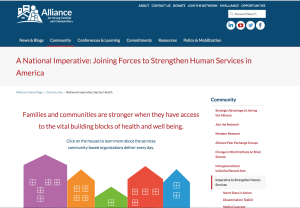An effort to make nonprofit tax forms and data more accessible and searchable online took a potentially big step forward after a judge’s ruling last week.
U.S. District Court Judge William H. Orrick of the Northern District of California gave the Internal Revenue Service (IRS) 60 days to comply with a nearly two-year-old Freedom Of Information Act (FOIA) request seeking Form 990s of nine tax-exempt organizations in a searchable, electronic format.
Public.Resource.Org submitted a FOIA request in March 2013, seeking release in Modernized E-file (MeF) format of Form 990s for nine nonprofits that had been filed electronically. The IRS argued that the MeF format was not a “recognizable record,” included confidential information, and the agency did not have a process to convert the releasable portions back into MeF. It also estimated a cost of $6,200 – including one-time expenses – to disclose the nine returns in MeF format, which would include developing a new protocol and training staff. Under the current process, IRS said it costs about $1.63 per Form 990 to produce image files, which doesn’t make it searchable as a .pdf.
The agency called it a significant burden to provide the forms in that format, adding that it’s the only agency still operating under “sequestration-level” budget, with sustained significant reductions of staffing and freezing of new IT initiatives because of lack of funds.”
“The wisdom of Congressional appropriations is not an issue before me,” Orrick wrote. “The fact that an agency may be under significant financial distress because it is underfunded does not excuse an agency’s duty to comply with FOIA,” he wrote. “If that was a valid excuse, anytime where was a request for production in a format that the agency has not accommodated before, the agency could argue undue burden,” Orrick said.
The IRS did not respond to a message seeking comment about whether it plans to appeal the decision. Public.Resource.Org President and Founder Carl Malamud said the judge’s ruling creates a binding precedent that could lead to more requests for data. However, he hopes to work with the Department of Treasury and the White House to release the entire database in searchable format.
Malamud has been working to get nonprofit data released in a searchable format since 2008, processing some 2,000 DVDs full of data from the IRS at a cost of about $20,000 — not including his time or pro bono services by his law firm. All Public.Resource.Org, works to create searchable databases of all kinds of public documents and records, has all Form 990s since 2002 on its website.
“We get funded for putting the law online, that’s our mission,” said Malamud, who was a consultant to the Obama transition team that made the Federal Register more accessible. In the 1990s, Public.Resource.Org purchased the data for Edgar and U.S. Patent Office filings to make it available online. “It’s all about public corporations. It makes our markets more efficient and more transparent,” Malamud said.
About half of nonprofits already e-file their 990s. Malamud said e-filings are so much easier with which to work. “It’s a crime not to deliberately release that information,” he said. “There’s a much broader issue at stake – the health of our nonprofit sector.”
Should the IRS comply it would allow for increased access and ability to actually analyze nonprofit data over time rather than the one-year snapshot that a 990 provides, according to Michael L. Wyland, a partner with Sumption & Wyland, a Sioux Falls, S.D.-based consulting firm to nonprofits. Subtle changes in IRS instructions for the Form 990 or accounting guidelines, however, could still provide its own challenges.
“One of the challenges going forward is going to be that the definitions of the various fields [in a database] can change from year to year. That’s a complexity when it comes to putting together one year’s data at the same time,” Wyland said. “Just because a field has a certain definition for 2012 doesn’t mean it retains the same definition for 2013,” he said. There also could be more subtle changes in the 990 and instructions or accounting guidelines that allow things to be reported differently year to year.
More accessible data could open to the door to competitors to challenge GuideStar in the market. It also would allow quicker access to more data for charity ratings services like Charity Navigator, possibly allowing them to do more analysis of more charities or improve existing analysis with more of a longitudinal approach, looking at year-over-year data versus a single year snapshot that sets ratings.
GuideStar, which compiles nonprofit data and 990s, spends about $1 million annually to digitize data from the IRS, according to President and CEO Jacob Harold. If the IRS were to make the data freely available on the web, it could hurt the nonprofit’s business model eventually, but that’s still likely years away, he said.
“By the time this data is out, our business model will have changed,” he said. Once the IRS data is available in a better format, those savings could be reallocated toward other things, like better data visualization, Harold said.
While people would be able to get this raw data directly from the IRS, GuideStar would present an experience for people to get the data easier and with more context. The organization employs full-time graphic designers and uses various mechanisms to track user behavior as well as collecting data directly from nonprofits in other areas, like programmatic strategies and stakeholder views and cross-referencing it.
“We absolutely support the general transition toward more openness by the IRS. We’re not co-signed onto this lawsuit but in principle we agree that IRS should release this data in a more accessible format,” Harold said, adding that a comprehensive solution is more complicated and will take IRS time.
“I don’t envy the position the IRS is in; there are a lot of demands on them, and resources are being squeezed. It’s not an easy thing, we know as well as anyone, to manage huge amounts of data. It takes significant resources,” he said.












